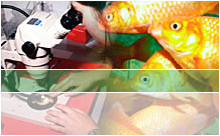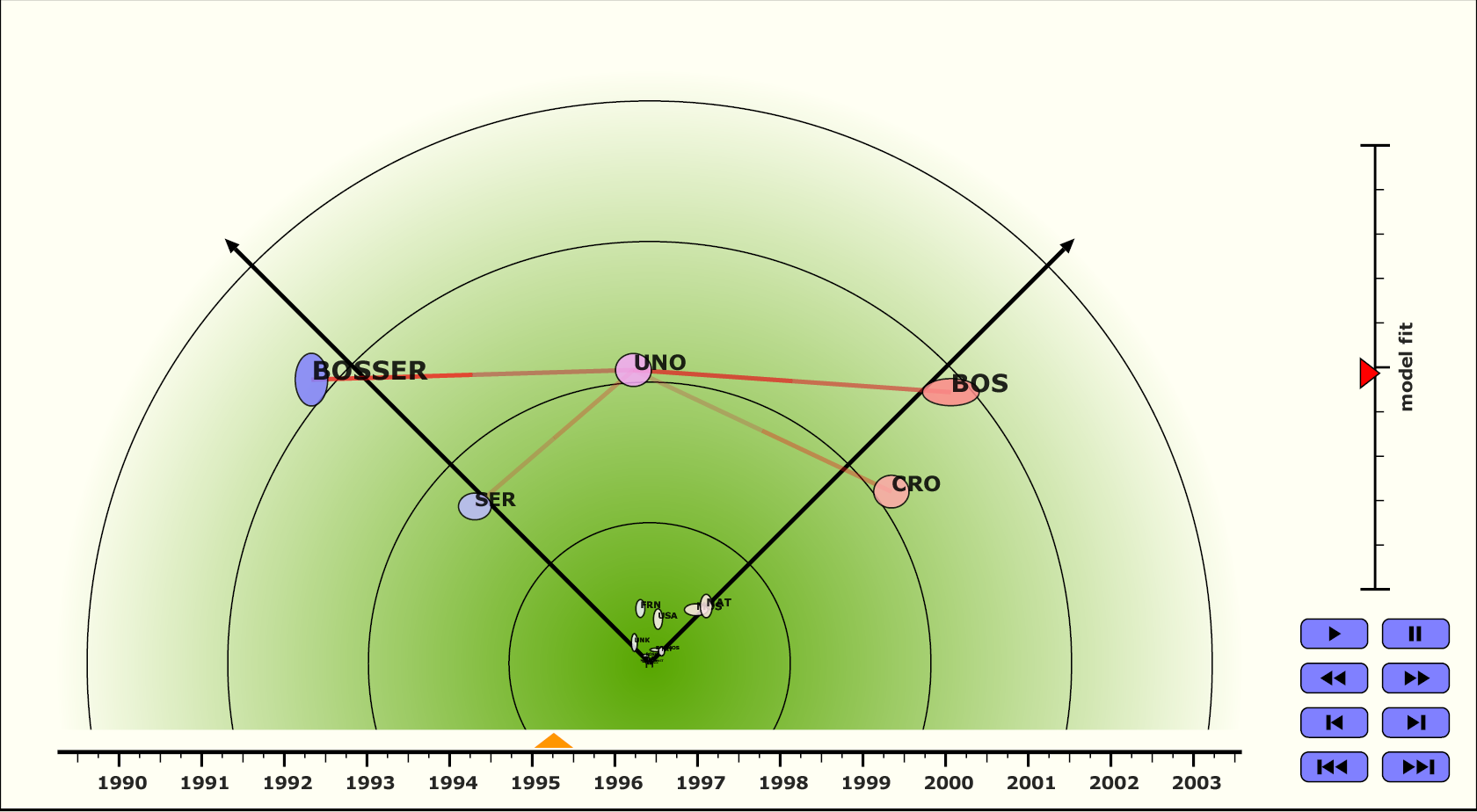Analysis and Visualization of Conflict Networks
Abstract
We present a method for visual summary of bilateral conflict structures embodied in event data. Such data consists of actors linked by time-stamped events, and may be extracted from various sources such as news reports and dossiers. When analyzing political events, it is of particular importance to be able to recognize conflicts and actors involved in them. By projecting actors into a conflict space, we are able to highlight the main opponents in a series of tens of thousands of events, and provide a graphic overview of the conflict structure. Moreover, our method allows for smooth animation of the dynamics of a conflict.
Application Examples
We applied our method to two data sets that are freely available at the KEDS project website. The first data set covers about 57,000 events involving states of the Gulf region and the Arabian peninsula for the period 15 April 1979 to 31 March 1999. The second data set covers about 79,000 events for the major actors involved in the conflicts in the former Yugoslavia from April 1989 to July 2003.
The following image shows one frame of a generated example video. It depicts the situation during the war in Bosnia in 1995. The edges (conflicts) can be shown on demand. Below, only edges incident to UNO are shown. (Click on the image for enlargement.)
Downloads
Videos
We generated example videos for the Gulf and Balkans conflict. Both videos are in dynamic SVG format and can be viewed with any browser, provided that it has an SVG plug-in. A freely available SVG plug-in can be downloaded from Adobe. (Note: if your browser opens the SVG-file but no animation starts, you need this plug-in.)- Persian Gulf region from 1979 to 1999.
- Balkans from 1989 to 2003.
- Balkans (smaller file-size) from 1989 to 2003.
Former videos (different layout):
- Persian Gulf region from 1979 to 1999.
- Balkans from 1989 to 2003.
Data
Data sets used to generate the above two videos. Obtained from the KEDS project website.- Persian Gulf region from 1979 to 1999.
- Balkans from 1989 to 2003.
Resources
- Adobe SVG plug-in for many platforms.
- The KEDS project website.
References
- Ulrik Brandes and Jürgen Lerner: Visualization of Conflict Networks, (PDF preprint). In Mayeul Kauffmann (Ed.): Building and Using Datasets on Armed Conflicts, NATO Science for Peace and Security Series E: Human and Societal Dynamics - Vol. 36, pp. 169-188. © IOS Press, 2008.
- Ulrik Brandes, Daniel Fleischer, and Jürgen Lerner: Summarizing Dynamic Bipolar Conflict Structures. IEEE Transactions on Visualization and Computer Graphics, special issue on Visual Analytics, 12(6):1486-1499. © IEEE Computer Society, 2006.
- Ulrik Brandes, Daniel Fleischer, and Jürgen Lerner: Highlighting Conflict Dynamics in Event Data. Proc. IEEE Symp. Information Visualization (InfoVis '05), pp. 103-110. © IEEE Computer Society, 2005.
Box D 67 · 78457 Konstanz, Germany
Phone: +49 7531 88 4431, Fax: +49 7531 88 3577
 Algorithmics Group
Algorithmics Group





